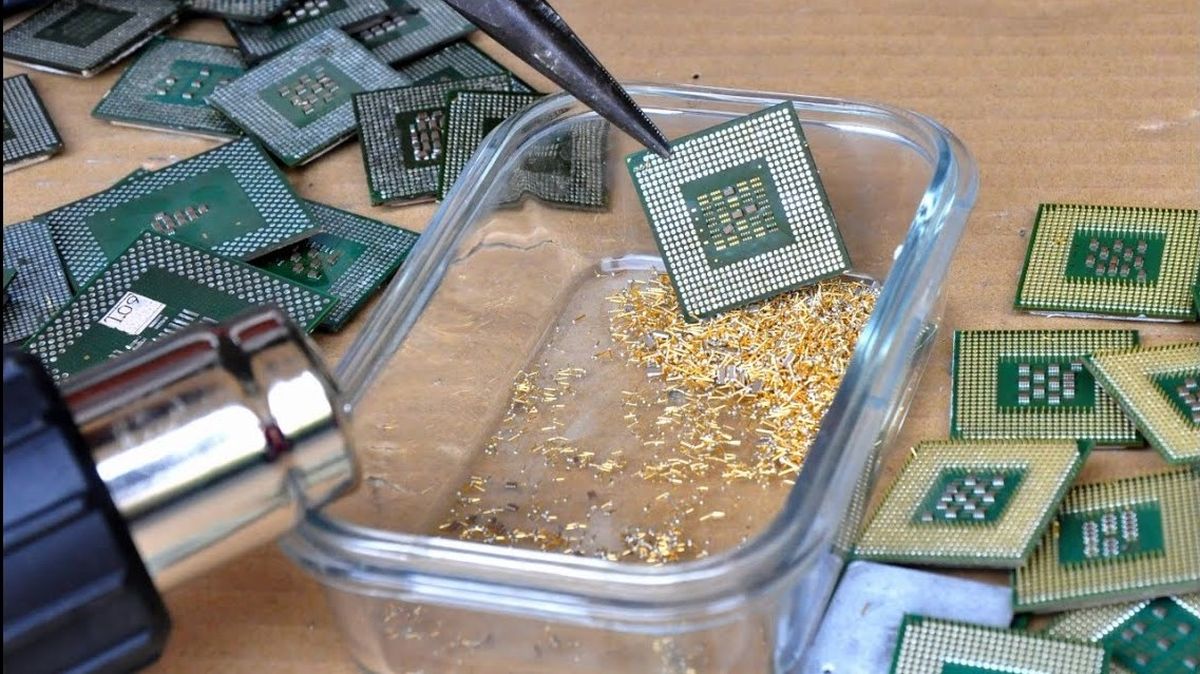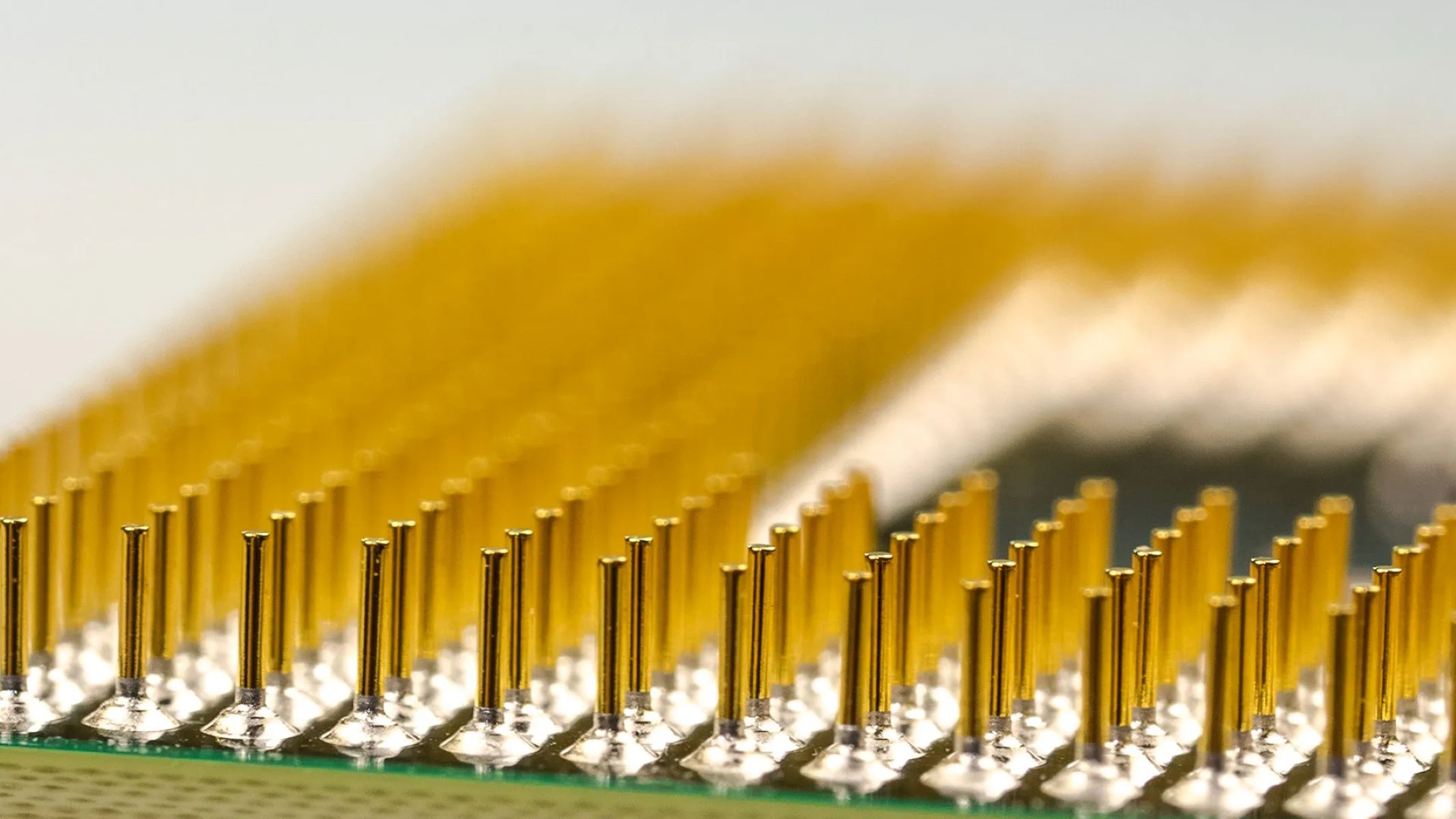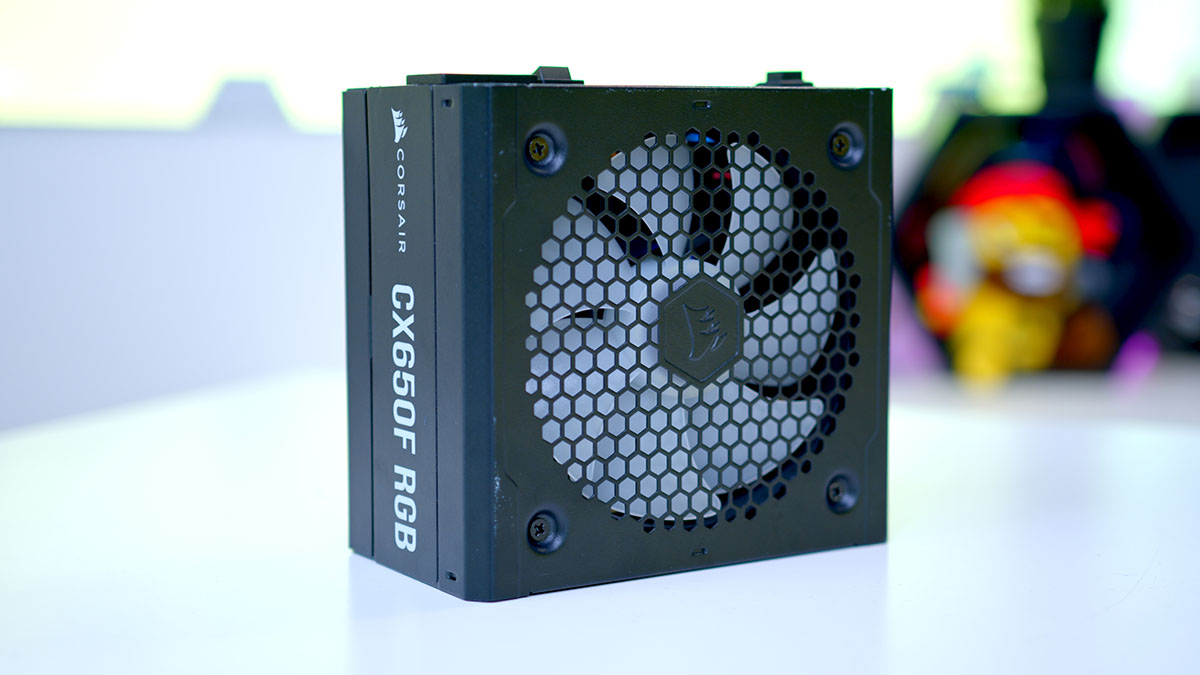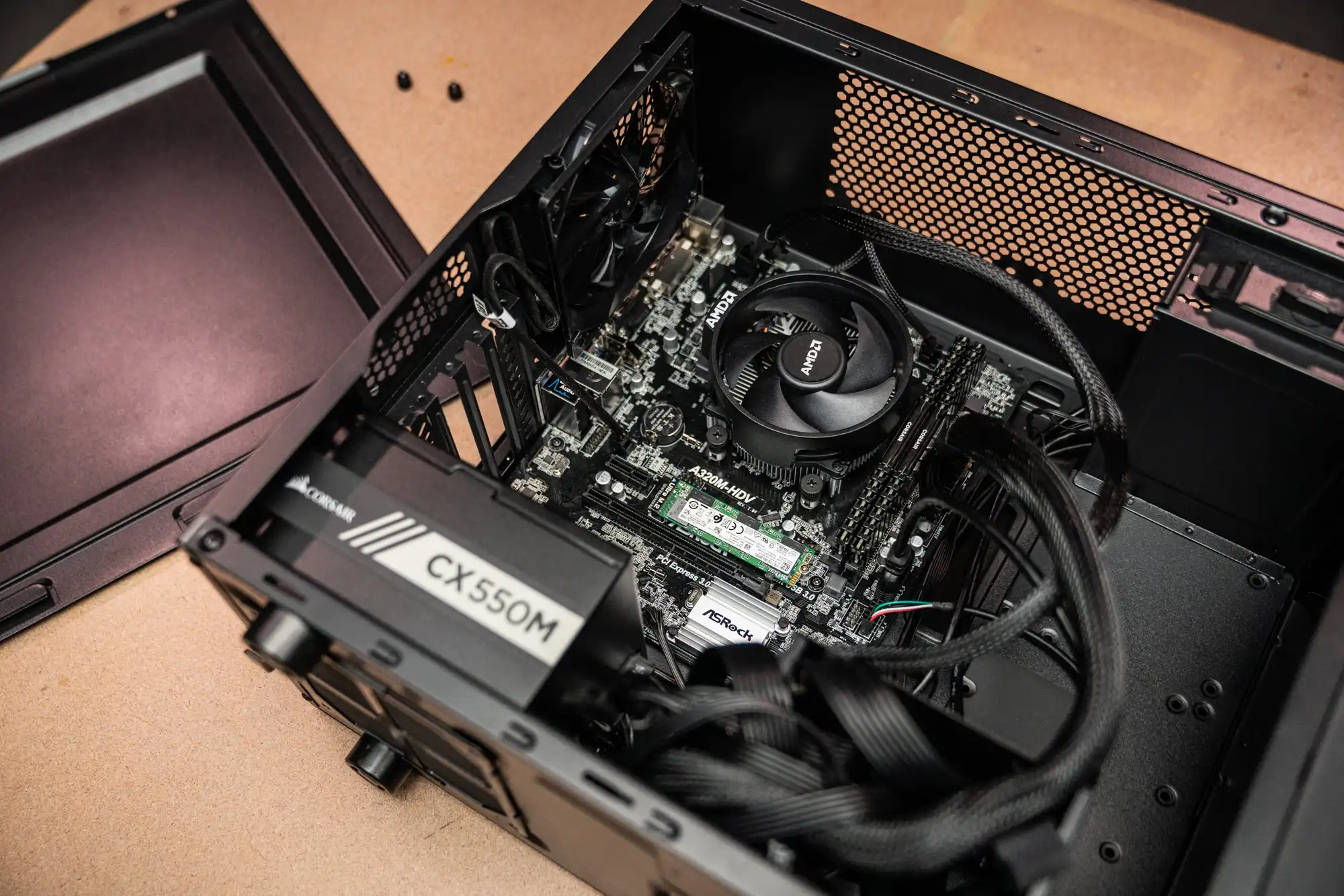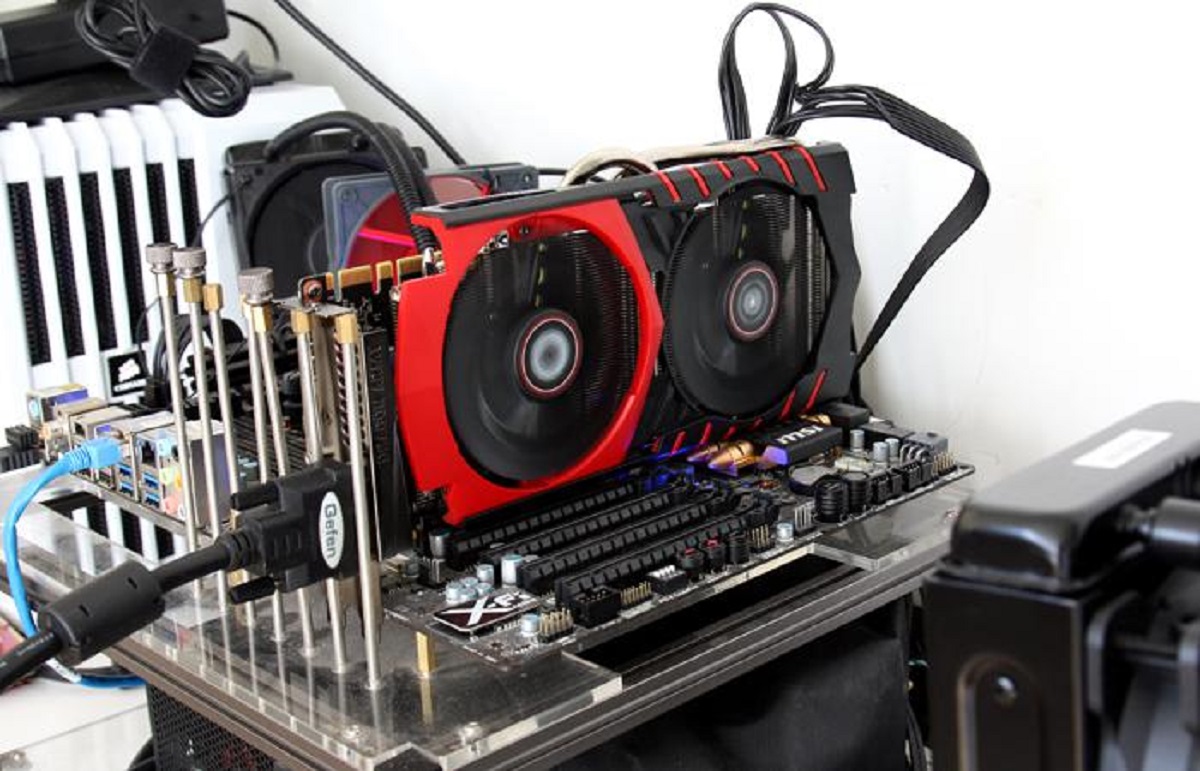Introduction
Have you ever wondered what makes your computer run so efficiently? The answer lies within its central processing unit, better known as a CPU. A CPU is the brain of a computer, responsible for executing instructions, performing calculations, and managing data flow. But did you know that besides its vital functions, a CPU also holds a hidden treasure? Among its various components, such as transistors and circuit boards, there is a tiny amount of gold.
Yes, you read that correctly – gold. While the amount may be minuscule, it is enough to have piqued the interest of many tech enthusiasts and treasure hunters alike. The presence of gold in a CPU may seem strange at first, considering that it is a precious metal associated more with jewelry and investments. But there is a scientific reason behind its inclusion in this electronic wonder.
In this article, we will delve into the world of CPUs and explore why gold is found in such electronic devices. We will also uncover the fascinating process of extracting gold from CPUs and discuss the value associated with this precious metal. So, grab your digital shovel and let’s dig deeper into the golden secrets of CPUs!
What is a CPU?
A CPU, or central processing unit, is the primary component that drives the functionality of a computer. It acts as the brain of the system, responsible for executing instructions, performing calculations, and managing data flow between different components. Without a CPU, a computer would be nothing more than a lifeless collection of hardware.
At its core, a CPU consists of a series of transistors and circuitry that work together to process and execute instructions. Transistors are tiny electronic devices that act as the building blocks of digital circuits. They can switch on and off, representing binary values of either 1 or 0, which form the basis of all digital operations.
The CPU receives instructions from various sources, such as the operating system or software applications, and translates them into a series of electrical signals that can be understood by the computer’s internal components. These instructions can range from simple arithmetic calculations to complex algorithms, depending on the task at hand.
In addition to executing instructions, the CPU also manages the flow of data within the computer. It retrieves data from memory, performs operations on it, and then stores the results back into memory. This data movement is crucial for the overall performance of the system, as it ensures that information is accessible when needed and processed efficiently.
CPU performance is often measured by its clock speed, which indicates how many instructions the CPU can execute in a given period of time. Higher clock speeds result in faster processing times, allowing for smoother multitasking and quicker response times.
Over the years, CPUs have evolved significantly, becoming more powerful and efficient with each new generation. Today, we have CPUs with multiple cores, allowing for parallel processing and increased performance. These advancements have played a significant role in enabling the complex tasks and applications we use on a daily basis, from gaming to data analysis.
Now that we have a better understanding of what a CPU is and its fundamental role in computing, let’s explore why this tiny piece of technology also incorporates a touch of gold.
Why is there gold in a CPU?
If you were to take apart a CPU, you might be surprised to find small traces of gold within its components. While the amount of gold may be minute, its presence serves a critical purpose. So, why exactly is there gold in a CPU?
The primary reason gold is used in CPUs is its exceptional conductivity. Gold is an excellent conductor of both heat and electricity, making it ideal for certain components within a CPU. Heat is a natural byproduct of the intense processing power of a CPU, and efficient heat dissipation is necessary to prevent overheating and damage. By using gold as a conductor, CPUs can effectively distribute and dissipate heat, ensuring optimal performance and longevity.
Gold is also highly resistant to corrosion, which is another crucial factor in its utilization within CPUs. As CPUs generate heat and are exposed to various environmental conditions, corrosion can occur, leading to an unwanted build-up of oxides and other contaminants. By incorporating gold into critical contact points and connectors, CPUs can maintain a reliable and stable electrical connection, even in demanding environments.
Moreover, gold offers excellent durability and longevity. CPUs are subject to intense usage and can undergo millions of cycles of operation during their lifetime. Gold’s resistance to wear and tear ensures that the electrical connections remain intact, reducing the risk of failures or malfunctions.
Furthermore, gold’s inert nature and lack of reactivity make it an excellent choice for components within CPUs that require stable and consistent electrical connections. As gold does not react with other metals or elements, it helps maintain signal integrity and prevents signal loss, resulting in reliable data transmission.
Interestingly, the use of gold in CPUs is not a recent development. It has been employed for many years, dating back to the early days of computing. The rarity and value of gold have not deterred its integration into CPUs. Instead, the unique properties of gold have made it an ideal choice for critical components that require superior conductivity, durability, and reliability.
Now that we understand why gold is present in CPUs, let’s explore just how much gold can be found in these electronic marvels.
How much gold is actually in a CPU?
While gold may be a precious metal, the amount found in a CPU is quite small. In fact, you would need hundreds of CPUs to accumulate a substantial quantity of gold. So, how much gold can be found in a CPU?
The exact amount of gold in a CPU varies depending on the specific model and year of manufacturing. However, on average, a typical CPU contains only about 0.2 grams of gold. This may not sound like much, but considering that CPUs are mass-produced and used in vast numbers, the collective amount of gold in circulation within CPUs is quite significant.
It’s important to note that the gold within a CPU is not found in the form of solid chunks or visible flakes. Instead, it exists as a thin layer of gold plating, which is applied to certain components to enhance conductivity and protect against corrosion. These gold-plated components include connectors, pins, and bonding wires.
The microscopically thin layer of gold on these components serves its purpose well, ensuring reliable electrical connections and long-term performance. However, due to its thinness and spread across numerous components, it takes a large number of CPUs to accumulate a substantial amount of gold.
Given the relatively small amount of gold in a single CPU, you might be wondering if it’s worth extracting. The answer lies in the value of gold and the recycling efforts that have emerged in recent years.
As the value of gold continues to rise, recycling companies have started to focus on recovering precious metals from electronic waste, including CPUs. These companies employ various techniques to extract gold and other valuable metals from discarded electronics, contributing to both environmental sustainability and economic viability.
Now that we know how much gold can be found in a CPU, let’s explore the process of extracting this precious metal from these electronic devices.
How is the gold extracted from a CPU?
Extracting gold from a CPU involves a complex process that requires specialized knowledge and equipment. While the amount of gold in a single CPU is small, extracting it efficiently is both a meticulous and rewarding endeavor.
The first step in the extraction process is the collection and disassembly of old CPUs. Recycling companies often source CPUs from electronic waste, including outdated computers and other discarded devices. These CPUs are then carefully deconstructed, separating the various components to access the gold-plated parts.
Once the gold-plated components are isolated, the next step is to remove the gold from these surfaces. There are several methods employed to accomplish this, but one common technique is called acid treatment. In this process, the gold-plated components are submerged into a mixture of acids, such as hydrochloric acid and nitric acid. These acidic solutions help dissolve the base metals, leaving behind the gold particles.
After the acid treatment, the resulting solution is filtered to remove any solid residues. The remaining liquid contains a mixture of dissolved metals, including gold, which needs to be further processed to separate the desired precious metal.
A common method used for this purpose is called electrolysis. In electrolysis, an electric current is passed through the solution, causing the gold particles to deposit onto a cathode. This gradual deposition of gold allows for the separation of gold from other metals present in the solution.
Once the gold has been successfully separated, it undergoes further refining to remove any impurities. This refining process involves various techniques, such as smelting or chemical treatment, to achieve a high level of purity and quality.
The extracted gold, now in its refined form, can be sold to gold refineries or used for various purposes, including the creation of new electronic components or jewelry.
It is worth noting that the process of extracting gold from CPUs is not without its challenges. The use of acids and other chemicals requires careful handling and adherence to safety protocols to minimize environmental impact and ensure the well-being of workers.
Despite the complexities involved, the extraction of gold from CPUs plays a significant role in recycling efforts and resource conservation. It not only allows for the recovery of valuable metals but also reduces the need for mining new resources, contributing to a more sustainable approach to gold production.
Now that we have explored how gold is extracted from CPUs, let’s discuss the value associated with this precious metal.
The value of gold in CPUs
The value associated with the gold found in CPUs can vary depending on several factors, including the current market price of gold, the quantity of gold recovered, and the cost of extraction. While the amount of gold in a single CPU may be small, when accumulated in large quantities, it can have a considerable worth.
The market price of gold is known to experience fluctuations, influenced by factors such as global economic conditions, investor sentiment, and supply and demand dynamics. These price movements can significantly impact the value of the gold extracted from CPUs. When the price of gold is high, the value of the recovered gold also increases, making the extraction process more financially rewarding.
Additionally, the quantity of gold recovered plays a vital role in determining its value. As mentioned earlier, a typical CPU contains only about 0.2 grams of gold. However, when recycling companies collect a large number of CPUs, the cumulative amount of gold can become significant. The more CPUs processed, the higher the value of the extracted gold.
It is important to consider the cost of extracting gold from CPUs when assessing its value. The process of disassembling, collecting, and refining the gold requires specialized equipment, labor, and other resources. These extraction costs should be taken into account to determine the net value of the recovered gold.
Efforts to extract gold from CPUs contribute to sustainability initiatives, allowing for the recycling and reusing of valuable resources. Recycling companies often offer competitive prices for electronic waste and CPUs, incentivizing individuals and businesses to participate in these recycling programs. By doing so, they not only contribute to reducing electronic waste but also help recover precious metals like gold.
The value of gold in CPUs extends beyond its monetary worth. Gold has long been valued for its symbolism, durability, and aesthetic appeal. While the gold in CPUs may not be suitable for use in jewelry due to its industrial-grade purity, it can still be used in various industrial applications, such as electronics manufacturing and chip packaging.
Ultimately, the value of gold in CPUs goes beyond its financial worth. It represents a form of resource conservation, environmental responsibility, and an opportunity to repurpose valuable materials. Recycling and extracting gold from CPUs provide a sustainable approach to the consumption and utilization of gold, aligning with global efforts to reduce waste and promote circular economies.
Now that we have explored the value associated with gold in CPUs, let’s conclude our journey into the world of CPUs and their hidden golden secret.
Conclusion
The world of CPUs is not only fascinating for its technological advancements but also for its hidden treasure – gold. Despite the small quantity of gold present in a single CPU, it holds immense value and significance in the realm of electronics and resource conservation.
Throughout this article, we have explored the various aspects of gold in CPUs. We learned that gold is incorporated into CPUs for its exceptional conductivity, resistance to corrosion, durability, and reliability. These properties ensure optimal performance and longevity of these electronic devices.
Although the amount of gold in a CPU is small, the collective amount from numerous CPUs can be significant. Recycling efforts allow for the extraction and recovery of this valuable metal, contributing to resource conservation and sustainable practices. The extraction process involves careful disassembly, acid treatment, electrolysis, and refining to separate and purify the gold.
The value of gold in CPUs goes beyond its monetary worth. It represents a responsible approach to electronic waste management, reducing the need for mining new resources and promoting the recycling and reuse of valuable materials.
Furthermore, the integration of gold in CPUs aligns with technological advancements in terms of heat dissipation, reliable connectivity, and stable data transmission. Gold’s unique properties make it an ideal choice for critical components within CPUs, ensuring efficient performance and longevity.
As technology continues to evolve, so will the utilization of gold in CPUs and other electronic devices. The ongoing efforts to extract gold from electronic waste contribute to a more sustainable and environmentally friendly future.
In conclusion, the presence of gold in CPUs is a testament to the remarkable properties of this precious metal and its vital role in the world of technology. As we continue to innovate and progress, it is crucial to recognize the value of recycling and resource conservation, making the most of the hidden treasures found within our electronic devices.







